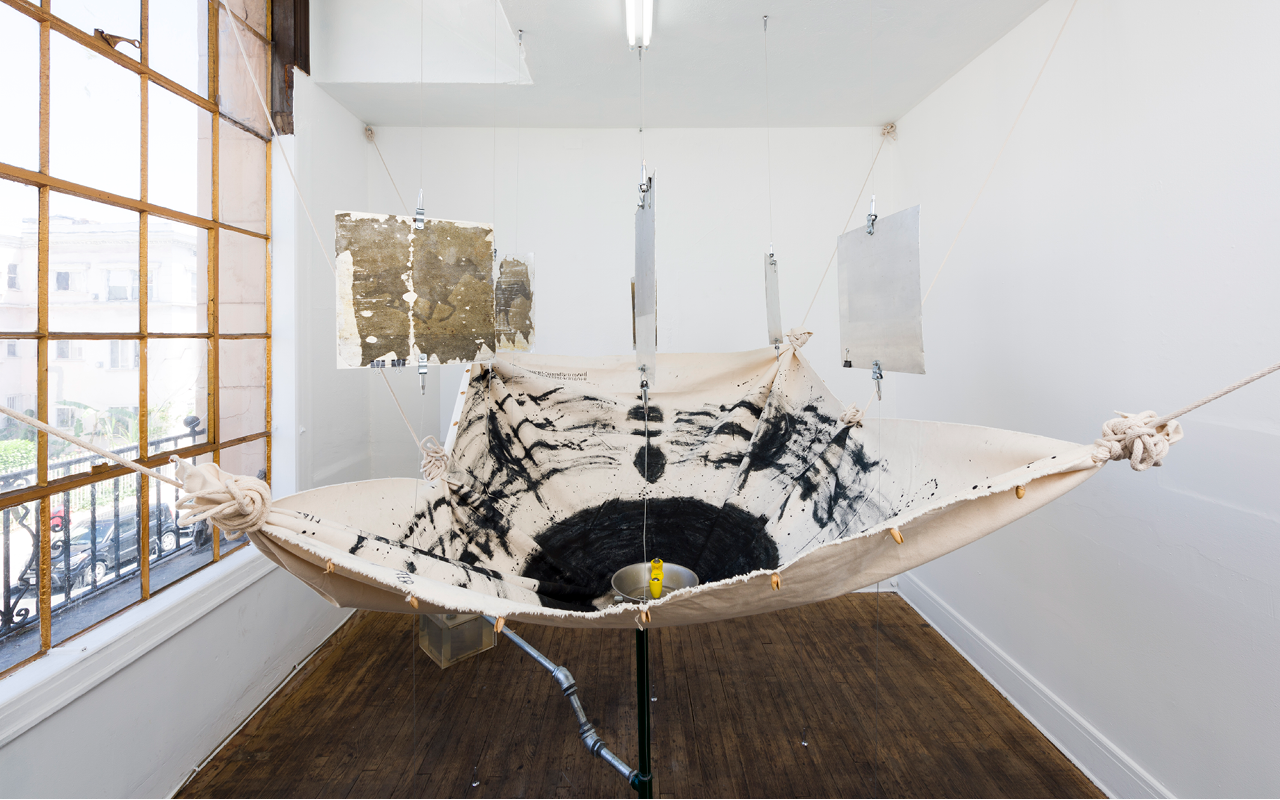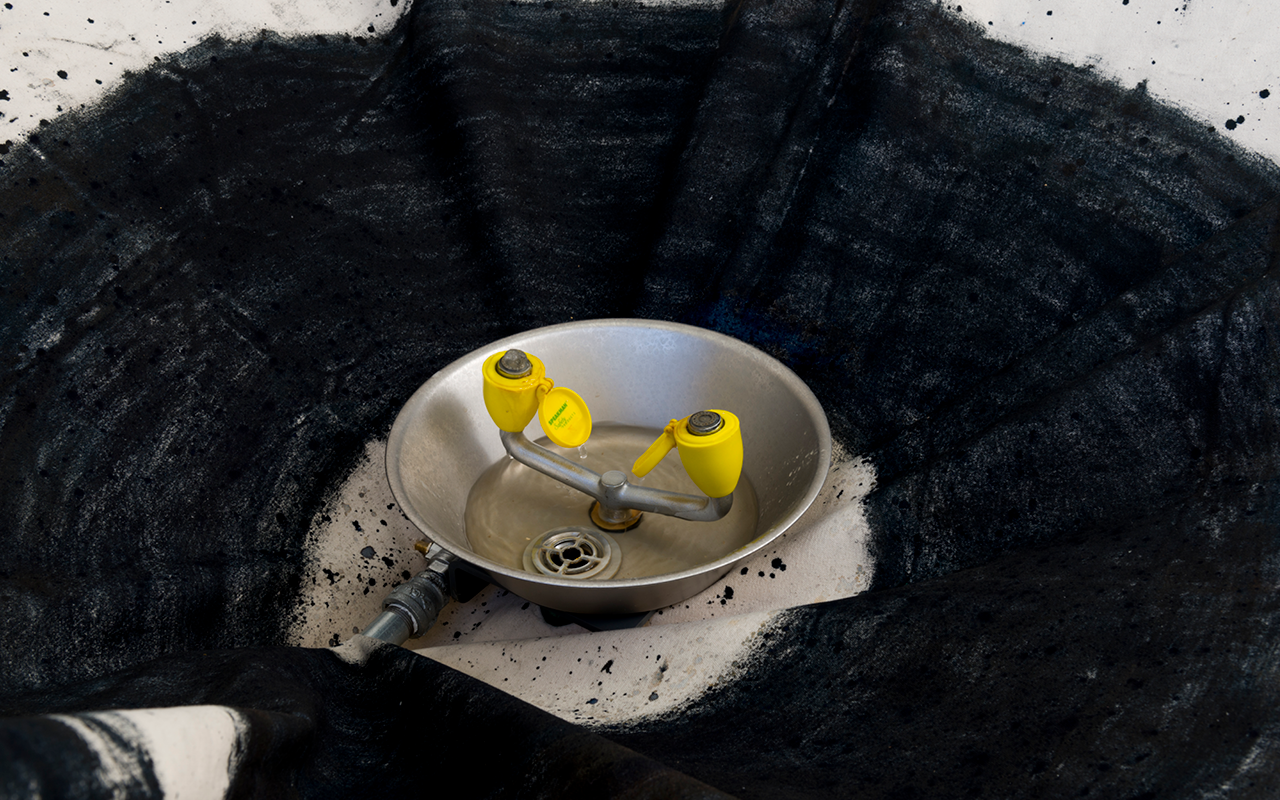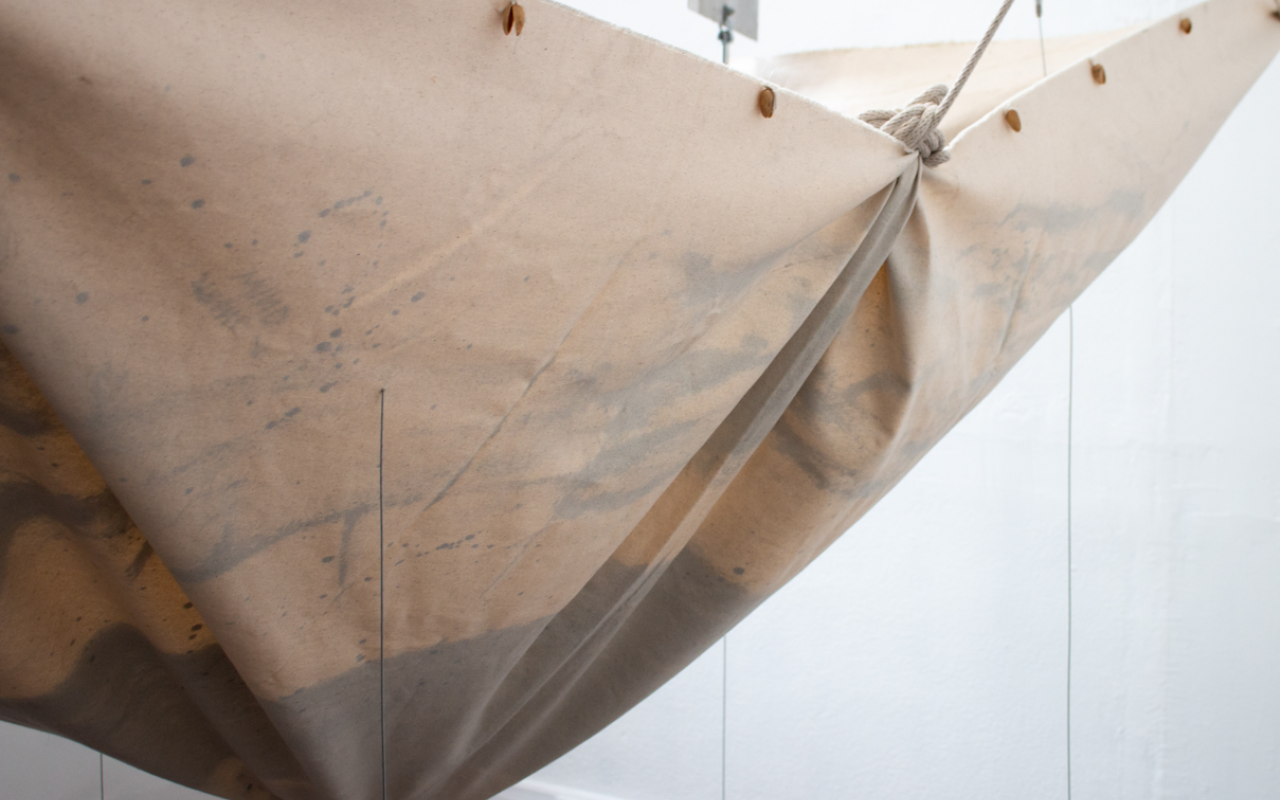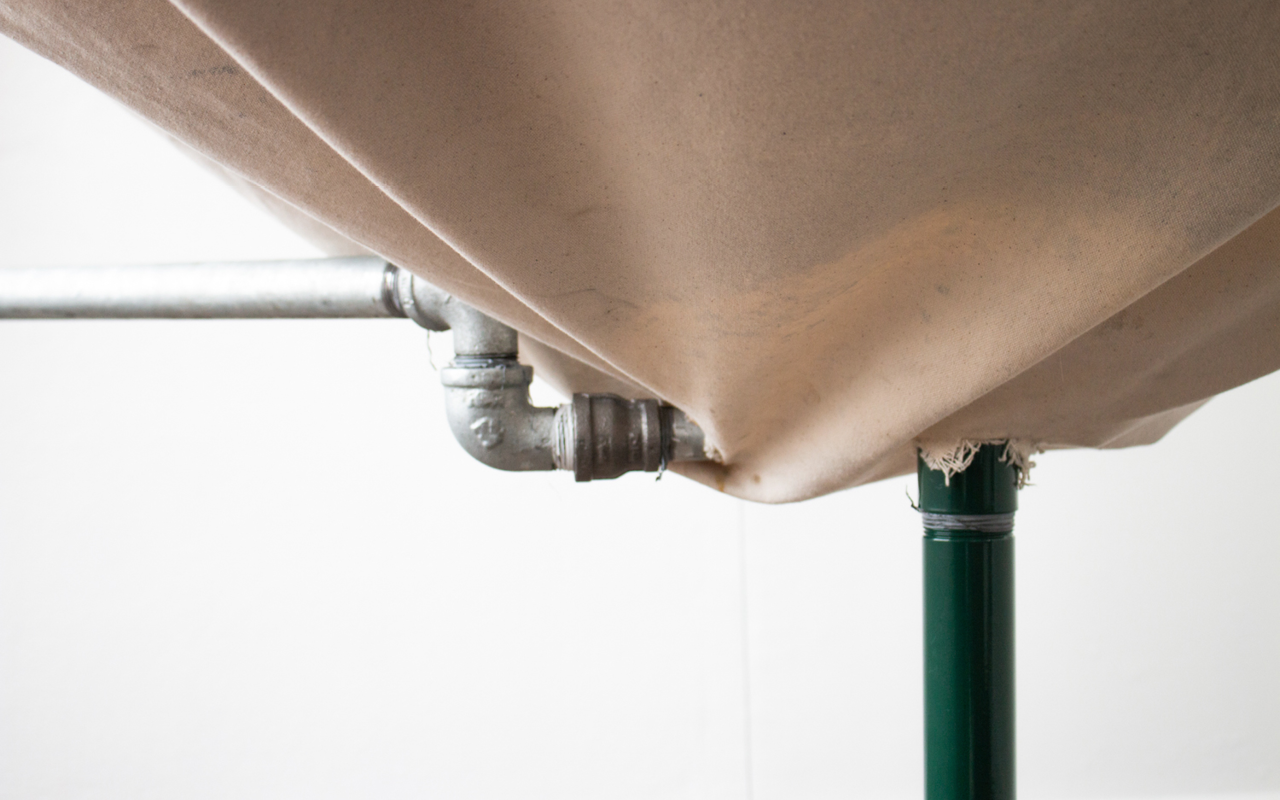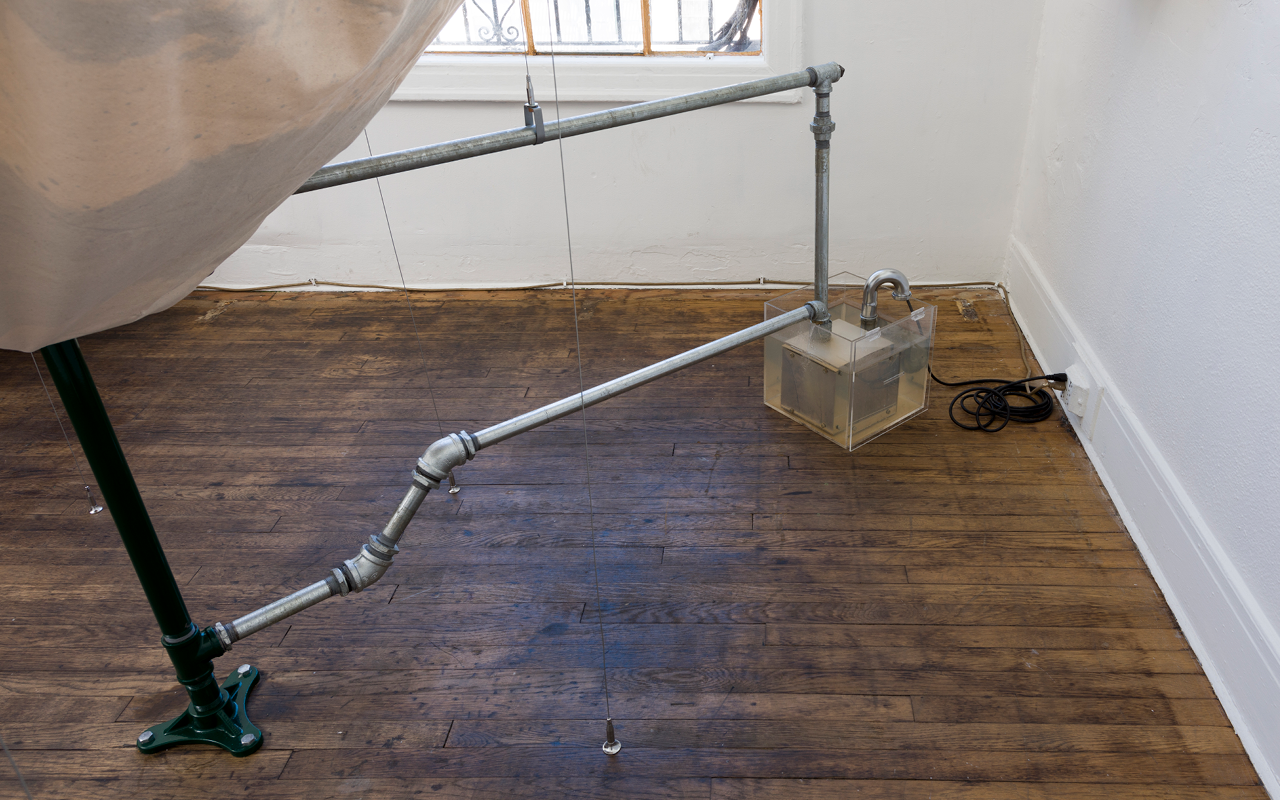Alexandre Dorriz
Fountain
May 18 - June 22, 2019In the living room of Lynda and Stewart Resnick’s (POM Wonderful, Wonderful Pistachios, Teleflora, FIJI Water) Beverly Hills home stands a seven-foot statue of Vincenzo Vela’s The Last Days of Napoleon I, a white marble monument of Napoleon clenching his hands over what looks like a blank white map.* Following President Jimmy Carter’s instated embargo on Iranian goods in 1979, the Resnicks purchased acres of land in California’s Central Valley from Mobil Oil and Texaco throughout the 1980s. Before the sanctions, Iran had maintained the global market share on pistachios. Dorriz traces the Resnicks’ financial contributions to both politicians and organizations whose continued involvement in sanctioning Iranian goods led to The Wonderful Company’s global market share on pistachios today.
Ibn al-Haytham’s Book of Opticsis the lens through which Dorriz examines the Resnick’s farming practices, provenance, museum holdings, and financial contributions. From the perspective of early modern French Orientalist expansions, Dorriz reflects on the representation of mirages—illusions of water—as a way to elucidate upon Imagined Geographies.* Through fieldwork and site visits, he imagines the territorialization of mirages at the prospects of droughts, floods, and the privatization of water banks. During the month of Sha’ban, the final lunar month before the beginning of the fast and historically dedicated to Bedouins’ search for water (April 5 - May 5, 2019, Gregorian), Dorriz has collected, indexed, and tested nearly eighteen liters of potable water from the water fountains of Los Angeles arts, science, and academic institutions to which the Resnicks donate.
Fountainis an installation that considers histories and narratives that vacillate between and collapse into interchangeable lens and optical-based systems. The inverted Shah Qajar tent in which the water fountain sits is made to the approximate average dimensions of the five versions of J.L. David’s Napoleon Crossing the Alps, in which optics are interpreted through historical painting.** The tent interrogates the history of French colonialism through the advent of the daguerreotype, which French Orientalist photographers would introduce into the Iranian royal court. The cyanotypes exposed within the inverted tent are defined by the location of their exposure. Exposed in front of the Resnick Pavilion at LACMA is a painting of the ship with which Napoleon led his campaign into Egypt, L’Orient, that set sail with scientists, artists, and academics on May 19, 1798.
Alexandre Dorrizis a research-based artist informed by interdisciplinary photographic approaches towards textile archiving and preservation, specifically matrilineal histories working with and collecting textiles for four generations through the Iranian Diaspora. He networks vacillating Orientalist histories with museum provenance in his practices. Dorriz’s current body of research is in breeding silkworms to model localized economies, investigate memory seriations in fiber and interpret silk protein as a time-based, photographic medium in an ongoing studio installation, entitled Economies of Small, or the Location of Capital.
